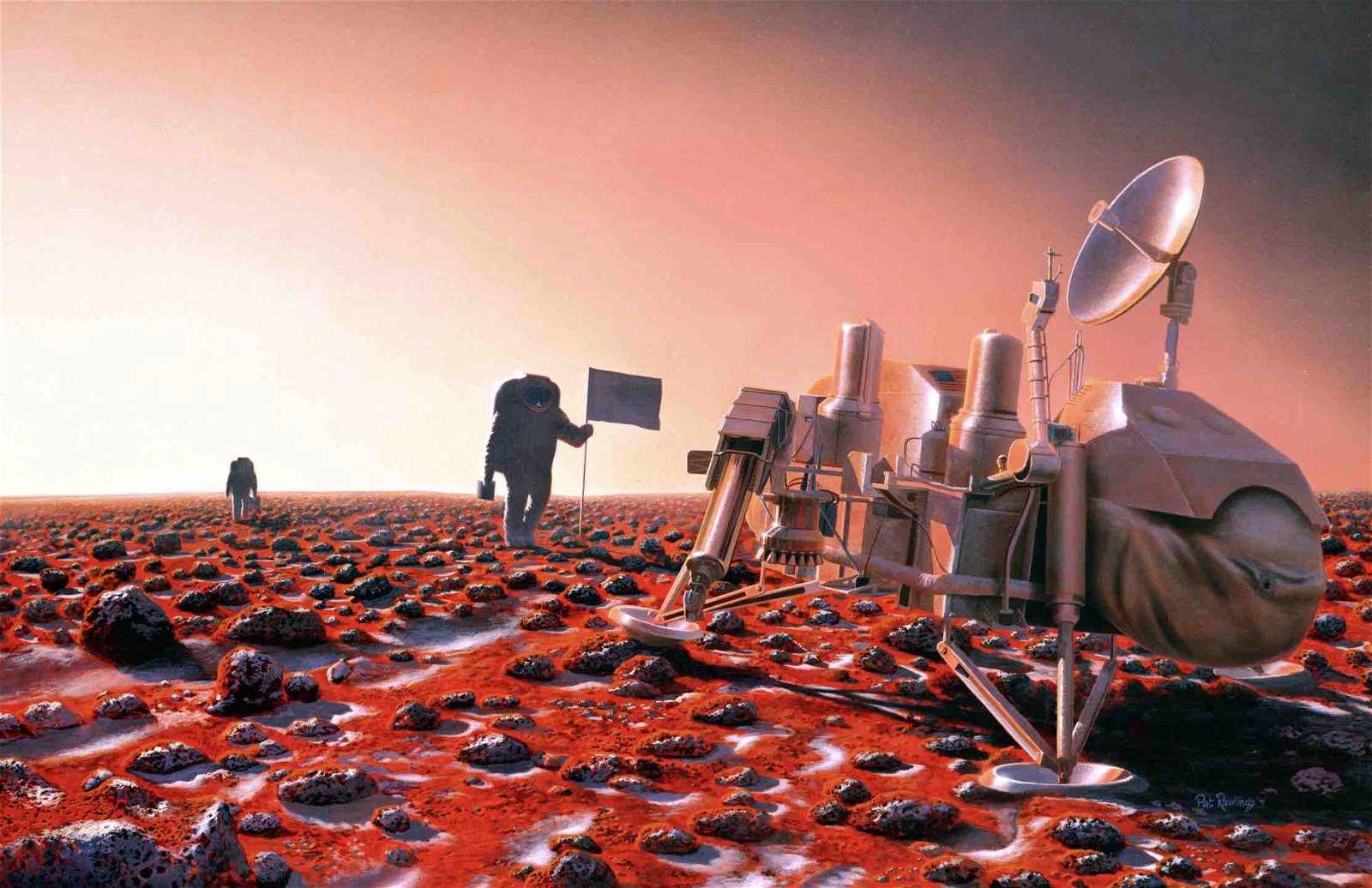Nearly 50 years after NASA’s historic Viking missions touched down on Mars, experts are questioning if we might have actually found—and inadvertently exterminated—extraterrestrial life.
Fresh debates and emerging academic perspectives suggest that humanity’s initial experiments on the Red Planet may have been fatally flawed, warranting a renewed quest to unlock Mars’ deepest secrets.
In 1976, the Viking I and Viking II landers made history by becoming the first American spacecraft to touch down on the Martian surface. The Soviet Union’s Mars 3 technically beat the Viking duo, having performed a soft landing on the red planet five years prior. However, the Soviet space probe suffered a catastrophic failure 110 seconds after landing, relaying only a single indistinguishable gray image before going permanently silent.
The primary aim of the Viking 1 and Viking 2 missions was to obtain high-resolution images of the Martian surface, characterize the structure and composition of the atmosphere and surface, and, most crucially, search for signs of alien life.
To achieve these ambitious goals, each Viking spacecraft consisted of both an orbiter and a lander. While the orbiter surveyed the planet from above, the lander conducted various experiments on the Martian soil. Among these were biological tests designed to detect microbial life by looking for signs of metabolism, photosynthesis, and respiration.
The Viking missions were monumental in providing scientists with the first high-resolution images of the Martian surface and in-depth analysis of Mars’s meteorological, atmospheric, and surface compositions.
The Viking landers were equipped with several instruments to conduct experiments to detect extraterrestrial life, including microbial life. These were the first ever life detection experiments performed on an alien planet, producing mixed, if not controversial, results.
Two of the Viking mission tests, the Labelled Release Experiment and the Pyrolytic Release Experiments, showed evidence of microbial metabolism and organic synthesis, indicating positive signs for the existence of alien life.
A third experiment using a Gas Chromatograph-Mass Spectrometer (GCMS) also detected trace chlorinated organics in the Martian soil, offering another significant biosignature for alien life. However, scientists eventually came to dismiss the positive results from the GCMS, concluding the compounds resulted from contamination from Earth-based cleaning agents.
The inability to conclusively detect organic compounds led NASA to officially conclude that no evidence of extraterrestrial life had been discovered on the Martian surface.
Nevertheless, nearly 50 years later, some experts argue that Viking did, in fact, find evidence of alien life, and the very detection experiments inadvertently killed it.


Author and astrobiologist at Technical University Berlin, Dr. Dirk Schulze-Makuch, has become a prominent voice in saying that the techniques used in the Viking missions to Mars may have hindered the search for life. He suggests that by introducing Earth-like conditions in experiments, scientists may have missed the evidence or, worse yet, unintentionally exterminated Martian microbes adapted to the planet’s dry climate.
Many of Viking’s life-detection experiments involved applying water to Martian soil samples. As Dr. Schulze-Makuch put it in a recent article for Big Think, “Since Earth is a water planet, it seemed reasonable that adding water might coax life to show itself in the extremely dry Martian environment.”
The problem with this, argues Dr. Schulze-Makuch, is that by adding water to soil samples, these experiments may have effectively drowned microbial life that had adapted to survive in the barren Martian climate.
“What would happen if you poured water over these dry-adapted microbes?” Dr. Schulze-Makuch questioned. “Might that overwhelm them? In technical terms, we would say that we were hyperhydrating them, but in simple terms, it would be more like drowning them.”
“It would be as if an alien spaceship were to find you wandering half-dead in the desert, and your would-be saviors decide, ‘Humans need water. Let’s put the human in the middle of the ocean to save it!'”
The “drowning Martian microbes theory” could explain the puzzling and contradictory results during the Viking life-detection experiments. The initial tests were primarily positive for life, while follow-ups failed to produce the same results because the experiments effectively killed any microscopic alien life.
Following Viking’s initial landings, subsequent explorations have confirmed that indigenous chlorinated organic compounds do exist on Mars. Whether these compounds stem from biological processes or abiotic chemical reactions remains unclear. Nevertheless, these results suggest that the initial detections of chlorinated organic compounds made by Viking were not from contamination by Earthly cleaning products.
Since it is widely believed that the principle of convergent evolution applies on a cosmic scale, scientists say that any life forms still present on Mars would have adapted to the planet’s harsh conditions.
However, in our early attempts to find life on Mars, scientists may have overlooked these organisms adapted to extreme conditions, also known as extremophiles, due to our Earth-centric bias in understanding life.
“Considering the ability of terrestrial extremophiles to adapt to harsh arid environments, it would seem that, if life were ever present on Mars, it could have adapted and evolved as Mars transformed to cold conditions where water was scarce,” researchers wrote in a 2016 study examining the potential for extant life overlooked in the Viking missions, published in Astrobiology. “Life may, therefore, still exist, if only in a cryptobiotic state.”
Ultimately, while the Viking missions were groundbreaking, emerging viewpoints suggest we may have missed significant findings due to our Earth-based assumptions.
Therefore, as preparations for future Mars missions gain momentum, a rethinking of strategy could help us avoid past missteps and confirm life on the Red Planet once and for all.
“As I have argued before, we need a new mission to Mars dedicated primarily to life detection to test this hypothesis and others,” Dr. Schulze-Makuch argues. “I cannot wait for such a mission to get underway.”
Tim McMillan is a retired law enforcement executive, investigative reporter and co-founder of The Debrief. His writing typically focuses on defense, national security, the Intelligence Community and topics related to psychology. You can follow Tim on Twitter: @LtTimMcMillan. Tim can be reached by email: tim@thedebrief.org or through encrypted email: LtTimMcMillan@protonmail.com

